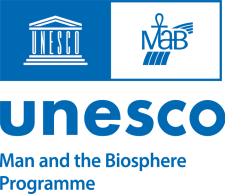
Biosphere regions/reserves (BRs) are sites designated by national governments and recognized by the United Nation Educational, Scientific and Culture Organization (UNESCO) as part of its Man and the Biosphere program (MAB). MAB supports capacity-building with a view to promote biosphere regions/reserves as model sites of sustainability, dialogue and learning.
Nomination
The International Co-ordinating Council is the MAB body that accepts or refuses applications from sites during its annual meeting. It is up to local proponents to apply with UNESCO and complete all national and international evaluations for their sites to be nominated. Once nominated, the sites remain under the sovereign jurisdiction of each State, but they convene and share their experiences and knowledge on an international level within the world network of biosphere regions/reserves.
Periodic Review
This status is not permanent. Every ten years, biosphere regions/reserves are evaluated before their status is renewed or revoked. Designated in 2007, the MUBR was submitted to this thorough evaluation in 2017 to maintain its leading position within the network and take advantage of this opportunity to inspire the next phase of strategic planning. With the process involving the first decade of designation completed, it is interesting to highlight that the MUBR is now ranked on the “Honour Roll” of the world network of biosphere regions/reserves!
World Network
There are currently 727 biosphere regions/reserves in 131 countries across the world. To see the network’s interactive map, please click here.
Canadian Network
There are 19 biosphere regions in Canada. To learn more about the Canadian network, please visit the Canadian Biosphere Regions Association’s website by clicking here.
Quebec Network
Other than the Manicouagan-Uapishka Biosphere Region, there are three BRs in Quebec: in Charlevoix, Lac-Saint-Pierre and Mont-St-Hilaire.

